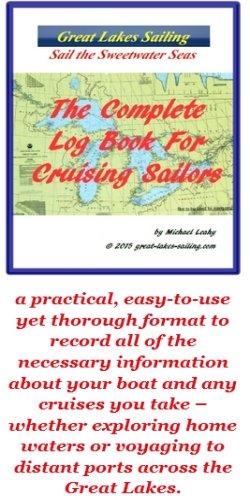John Harbour
Great-Lakes-Sailing.com
|
John Harbour, ON Lat: 46° 18.298 Long: 082° 37.578 |
|
Quick Reference:
|
Important Numbers n/a |
|
DISTANCES
|
|
DESCRIPTION The North Channel is considered on of the finest sailing grounds in the world. Extending from west to east, it is bounded on the south by Manitoulin Island and on the north by a network of smaller islands. Lying between these islands and the mainland is Whalesback Channel and McBean Channel. These two smaller channels offer simply stunning scenery. They offer a cruising sailor an experience unmatched virtually anywhere else on the Great Lakes. John Harbour is a beautiful anchorage located at the west end of John Island, on the south side of Whalesback Channel. The anchorage is created by a long, narrow expanse of water between John Island to the north and Dewdney Island to the south. John Harbour gets its name from John Moiles who established a lumbering operation and fishing station on the island in the late 1800's. Moiles and his three brothers were owners of a failing lumbering mill in De Tour Village, MI. They were also very unpleasant people to deal with. When their mill failed, creditors took it over and locked it up. On April Fools day, 1893, they launched a daring raid to get their mill back. They managed to get the night watchman drunk and, with a crew and 2 boats, disassembled the mill in a matter of hours, loaded the pieces onto the boats and raced for the Canadian border. Although chased, they were successful in ultimately crossing the border and got away with their brazen act. They arrived at what is now known as John Island and reassembled the mill on the east end at what became known as Moile's Harbour. In a deep, protected bay at the west end, a small fishing station grew up. By 1903, a combination of bad business management and surly behaviour towards nearly everyone, but especially customers, caused their operation to fail again. |
|
APPROACHES NOTE: It is important to pay attention to your navigating when sailing in the North Channel. The bottom and the shorelines are rocky and lack of attention can result in serious damage to your boat. In addition to charts and a chartplotter, a very handy tool is an old-fashioned lead line. (mine is simply a very heavy steel nut tied to a 50 ft piece of line, marked off in feet). Enter anchorages and constricted passages slowly and having a bow lookout can be very helpful. Many people are reluctant to sail these waters because of fear of this rocky environment. That 'fear' should engender caution, not avoidance. Plan well and go carefully and you will see a spectacular part of the Great Lakes. Others have and you can too. The approach is clearly marked on charts. From the charted Whalesback Channel, go to a point immediately south of Turtle Rock. From this point, steer a course of approximately 175°T toward the west end of Dewdney Island. Once abeam of Le Sueur Island, slowly bend your course to the east. Once you clear the south tip of Gowan Island, you have a clear course into the anchorage. About 1/2 way along the north side of Dewdney Island lies Cleary Cove, a beautiful, sheltered cove. The average depth is 4-5 feet. If you have a shallow draft, it can be a magical place to drop anchor. Many sailors will explore this small cove by dinghy. |
|
MARINAS, YACHT CLUBS, MOORINGS, ANCHORAGES There are many places to anchor safely along either shoreline of John Harbour |
|
REPAIRS & MAINTENANCE, PROVISIONING, BANKS/ATM's n/a |
|
MEDICAL SERVICES n/a |
|
PLACES TO EAT n/a |
|
THINGS TO DO/SEE/VISIT John Harbour offers some of the classic Northern Ontario landscape. It is beautiful to see and one can easily explore the mainland or the nearby islands. Cleary Cove is an especially beautiful hidden gem, definitely worth exploring by dinghy or kayak. Return from John Harbour to North Channel Return to Home Page |
